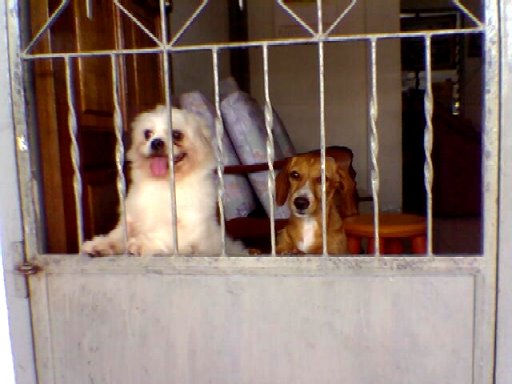Seven Steps in Westie Training
While westie training is one of the most
important duties of a pet owner, achieving
favorable results is certainly not impossible.
It's not difficult as well considering that this
breed is naturally easy to train. Training
westies should be fun both for you and your dog
for it is during this time that he discovers
details necessary for him to become
well-behaved. Moreover, training is also an
excellent opportunity for you to learn more
about each other thus improve the owner-pet
connection.
The following are some tips you may want to
think about to achieve successful westie
training:
Preparation.
Just like having a trip, westie training
requires thorough planning and preparation. As
owner, it's your job to learn more about the
breed, their characteristics and what training
strategy would work best depending on their
characteristics. You can ask for advice from
other breed owners in your neighborhood or
search the web for websites, discussion boards
or online communities specially focused on
westies. In addition to that, it's also
important that you are committed in reaching
your objectives. If you are not sure whether or
not you can provide the training and care a pet
needs, then pet ownership is perhaps not for
you.
Preparing the dog.
Naturally, the dog should prepare for training
as well. He should be physically fit before
going through training, be it training for basic
obedience or housebreaking. A sick or anxious dog
will not learn efficiently hence it is important
to take into consideration their current
condition before training starts.
Starting simple.
It is not a good idea to incorporate intricate
lessons during the first few days of westie
training. Start off with socialization in order
to get him used to the new environment he's
into. During socialization period, you need to
start housebreaking him as well. Then deal with
basic commands one at a time. You can work with
come command after he has mastered the command
sit. Spend a few days training each command and
avoid training multiple commands at a time for
it will only confuse him.
Reward.
Several dog owners and experts encourage the use
of positive training due to the fact that it's
regarded as the most humane and effective
approach. Positive training involves giving of
rewards for every good behavior demonstrated.
This is to motivate a dog to repeat the behavior
he is being rewarded for. Rewards could be
whatever your pet finds gratifying such as tasty
treats, favorite toys, praise and time to play.
Giving of food treats must be regulated though
to prevent weight problems and turning your pet
into a food-dependent canine.
Punishment.
Physical punishment won't do your four-legged
friend anything good. In fact, it can trigger
issues including but not limited to aggression
and may even cause your pet to be terrified of
you. Aside from that, punishing him each time he
committed accident could potentially cause him to
do his thing in places you are less likely to
find, or worse, he will feel reluctant of doing
it.
Training time.
Training should not go beyond one hour each
session. The ideal duration of training ought to
be around 20 minutes each session to prevent your
pet from getting bored that may result in
disappointment on your part.
Daily activities.
In order to help your dog master the commands
taught to him, it would be a smart idea to use
the commands in his daily activities. For
example, if you're currently training him the
command sit, issuing the said command just
before putting his food bowl on the floor or
prompting him to sit when someone is nearing can
help him determine that the command does apply
anytime, anywhere, not just in the confines of
your living room where training took place.
----------------------------------------------------
Kathleen Jenkins has been helping pet owners with
westie training. If you would like to get helpful
tips from her, take a look at her site
http://www.westiesavvy.com
EasyPublish this article: http://submityourarticle.com/articles/easypublish.php?art_id=216295














.jpg)






.jpg)

0 comments:
Post a Comment